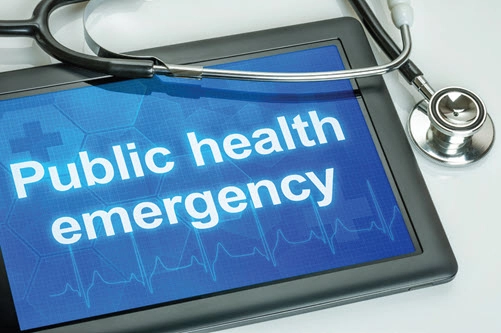Understand which big-picture announcements may impact your day-to-day work.
The Centers for Medicare & Medicaid Services (CMS) is trying to get back to some semblance of prepandemic normal, despite the spikes of coronavirus cases across the country and within nursing facilities, especially.
This means that facilities are going to need to juggle compliance and administrative responsibilities that had, for a time, been waived — but the official extension of the public health emergency (PHE) does continue to provide a bit of relief.

Take Solace in Extension of PHE
Extension: On July 23, the Department of Health and Human Services (HHS) Secretary Alex Azar renewed the PHE. The change was effective on July 25 and extends the PHE through Oct. 23, 2020 — for an additional 90 days. This is the second extension Azar has issued after originally declaring the COVID-19 pandemic a PHE on Jan. 31.
Review the PHE particulars at www.phe.gov/emergency/news/healthactions/phe/Pages/covid19-23June2020.aspx.
The extension is a real boon for nursing facilities and the long-term care industry as everyone struggles to combat the virus. “This renewal extends the wide array of waivers and flexibilities that have been issued by HHS in response to COVID-19,” says attorney Madison Pool with Arnall, Golden, Gregory LLP in online analysis. However, facilities must remember that the federal government can roll back policies at any time, and the Secretary can terminate the PHE at his discretion.
“The declaration will not extend indefinitely, so providers should keep one eye to the future and be aware of how changes implemented to respond to COVID-19 will have to be reverted once the flexibilities terminate,” Pool advises.
Keep Tip Sheet Handy
CMS added COVID-19 PHE tip sheets for home health, inpatient rehabilitation facility (IRF), long-term care hospital (LTCH), and skilled nursing facility (SNF) Quality Reporting Programs (QRPs). The tip sheets address the end of temporary exceptions on June 30 and the restarting of data collections on July 1 in the various QRPs.
In addition, CMS includes the following items in each tip sheet:
Find the SNF tip at www.cms.gov/files/document/snfqrp-covid19phetipsheet-july2020.pdf.
Prepare for Resumption of Claims Review

Medicare is cranking up its medical review machine for all providers, and more details are coming out about what that means. For example: “Beginning August 17, the MACs are resuming with post-payment reviews of items/services provided before 3/1/2020,” HHH Medicare Administrative Contractor (MAC) Palmetto GBA reveals in a recent post to its website. That means no claims from the pandemic period will be included in the restart. “The Targeted Probe and Educate program (intensive education to assess provider compliance through up to three rounds of review) will restart later,” says HHH MAC National Government Services in an identical post on its website. “The MACs will continue to offer detailed review decisions and education as appropriate.”
Heed Title VI Responsibilities
If you’re getting financial assistance from the federal government, you may want to revisit the rules and requirements under Title VI of the Civil Rights Act of 1964, cautions a recent HHS Office for Civil Rights (OCR) brief.
On July 20, OCR issued new guidance reminding “recipients of federal financial assistance” that they must comply with “federal civil rights laws and regulations that prohibit discrimination on the basis of race, color, and national origin in HHS-funded programs during COVID-19,” an agency release warns.
Recent data suggest there’s been an increase in discriminatory practices across the healthcare spectrum during the pandemic. This has prompted the agency to work in tandem with the Centers for Disease Control and Prevention (CDC), the HHS Office of Minority Health, and the National Institutes of Health (NIH) to identify, research, and stop racial and ethnic inequities.
Additionally, OCR offers specific guidelines to aid the healthcare community with Title VI compliance — and ensure equal access to care, treatment, and testing. A couple of the OCR highlights pertinent to nursing facilities include:
“HHS is committed to helping populations hardest hit by COVID-19, including African-American, Native American, and Hispanic communities,” stresses Roger Severino, director at OCR. “This guidance reminds providers that unlawful racial discrimination in healthcare will not be tolerated, especially during a pandemic,” he adds.
Read the bulletin at www.hhs.gov/sites/default/files/title-vi-bulletin.pdf.
